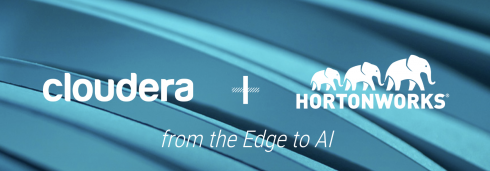
Earlier this month, data companies Cloudera and Hortonworks announced that they would be entering into a merger. Both companies were leaders in the big data space.
The companies stated that they hoped the merger will enable them to become a next-generation data platform together.
Cloudera was originally co-founded in 2008 with talent from Google, Facebook, and Yahoo in an effort to deliver a big data platform that was built on Hadoop. Three years after that, Hortonworks was created with the same goal, explained Cloudera chief strategy officer Mike Olson in a post.
“Since 2011, our two companies have each innovated to build better products and win more business. In the competitive world of data management, we can each look with respect at the success of the other. I’m proud of what we’ve done at Cloudera, and I’m impressed at what the team has accomplished at Hortonworks,” Olson wrote.
In the years since the two companies were founded, the competitive landscape has changed significantly, and now includes a large number of companies.
According to Tendü Yoğurtçu, CTO of Syncsort, a close partner of both companies, the two companies have emerged as clear winners in the data space and gained momentum. “But each has had its own unique strengths, and been up against the challenges of an emerging data management platform. Hortonworks clearly put focus on IoT and streaming use cases whereas Cloudera put focus on data science use cases, strengthening the platform with machine learning and artificial intelligence. The merger is great news for consolidation of the market, bringing together the strengths of each company into one single entity that will be able to advance its solutions and the industry’s maturation far faster than either could alone, and to address the cloud and hybrid cloud market requirements.”
According to a post written by Rob Bearden, president and CEO of Hortonworks, the merger with Cloudera is the first step in the next chapter of the company’s evolution. “Cloudera has a like-minded approach to next generation data management and analytics solutions for hybrid deployments. Like Hortonworks, Cloudera believes data can drive high velocity business model transformations, and has innovated in ways that benefit the market and create new revenue opportunities. We are confident that our combined company will be ideally positioned to redefine the future of data as we extend our leadership and expand our offerings,” Bearden wrote.
Not all companies believe that the merger indicates a positive change for the two data giants. Many believe that the merger is an attempt for the two companies to stay alive in the changing data landscape.
Ashish Thusoo, CEO and co-founder of cloud-native data platform Qubole, thought that the merger was inevitable. “We are not surprised by this merger. We see it as something of a swan song for the two declining legacy players in the market, and proof that the on-prem data world is becoming obsolete. The market is evolving away from the Hadoop vendors – who haven’t been able to fulfill their promise to customers – toward cloud native options that are much more nimble and better suited to solve the big data challenges of businesses.” he said.
“I can’t find any innovation benefits to customers in this merger,” said John Schroder, CEO and Chairman of the Board at MapR. “It is entirely about cost cutting and rationalization. This means their customers will suffer. MapR has been innovating and delivering a better data platform for years, and we continue to see Cloudera and Hortonworks customers move to MapR.”
What does the merger mean for customers?
According to Olson, the merger is not yet official and the deal will take several months to close. Bearden expects the transaction to close in the first quarter of 2019. Until then, the two companies will continue to operate separately.
Cloudera product CDH and Hortonworks products HDP and HDF will each be supported and maintained for at least three years after the merger closes.
Each company’s partners will have access to a larger partner community and will benefit from a single standard to build on as well as larger company with more customers, Olson explained.
Both Cloudera and Hortonworks released major versions of their platforms over the summer, which Olson claimed to be a “fortunate coincidence.” Both releases were based on current open-source project release, which means that the two development lines are closer than they have been in a while. The companies expect to be able to quickly combine the two into a single “unity” release soon after the deal is closed, Olson explained.
They will work to ensure that the single platform will include all of the features that the companies had separately developed, allowing customers to seamlessly upgrade from their current installations to the new product. Together, the companies will serve over 800 customers, Bearden wrote.
The companies will also work to quickly cross-port their unique product offerings — Hortonworks DataFlow, Cloudera Data Science Workbench (CDSW), and Cloudera’s Workload Experience Manager (Workload XM) — so that they work with both of the platforms. This will ensure that customers will have access to “the innovative products of both,” explained Olson.
“By merging Cloudera’s investments in data warehousing and machine learning with Hortonworks’ investments in end-to-end data management, we are generating a winning combination, which will establish the standard for hybrid cloud data management,” said Bearden.






